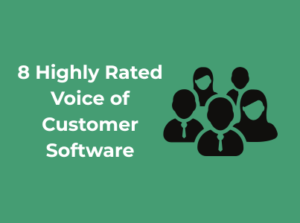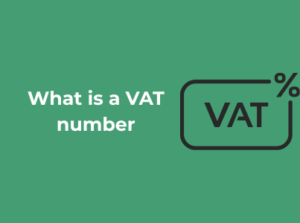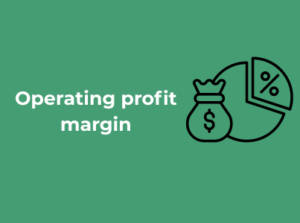Let’s dive into the basics—what exactly does VAT stand for, and why does it matter? VAT, or Value Added Tax, is a consumption tax added to goods and services at various stages of production or distribution. Think of it as the tax component of the price you pay when you purchase something, but with an important difference: it’s charged at each stage of the supply chain.
Sounds straightforward enough, right? But let’s break it down further to really understand its purpose. The goal of a VAT system is to ensure that tax is collected incrementally as value is added to a product or service. Essentially, at every step of the process—from raw material suppliers to manufacturers, wholesalers, retailers, and finally, to consumers—VAT ensures a slice for the government. Simply put, everyone chips in a bit.
Why is it Called “Value Added” Tax?
Great question! The “value added” part refers to the extra worth created at any particular stage of production or service delivery. Imagine a simple example: a furniture maker buys wood from a supplier, builds a chair, and sells it to a retailer. At each step, value is being added—the wood supplier provides the raw material, the carpenter transforms it into a usable product, and the retailer makes it available to customers. VAT is calculated and applied to the value added at each of these steps.
What makes this special is that each business in the supply chain can usually claim back the VAT they’ve paid, as long as they have a registered VAT number (more on that in another section). This mechanism prevents “double taxation” and keeps the system fair. Ultimately, the end user—the consumer—is the one who bears the full tax cost, since they can’t reclaim VAT.
VAT vs. General Tax: Why Should You Care About the Difference?
Unlike income taxes or corporate taxes that are based on earnings, VAT is all about spending. In fact, when you see VAT listed on a receipt, it’s a clear example of a tax you are directly contributing to, rather than a behind-the-scenes deduction. The process is often a lot more visible if you’ve ever looked closely at the breakdown of costs on an international invoice or receipt.
Some Fun (and Useful!) Points About VAT:
- It’s nearly global: Over 160 countries use VAT in some form. So, knowing about this tax system can give you a leg up when traveling or conducting international business.
- Not every country calls it VAT: For instance, Canada uses something called GST (Goods and Services Tax) in a similar way, and some U.S. states operate on a sales tax model instead.
- Businesses acting as tax collectors: Whether you’re a small business or a multinational, if you charge VAT, you’re essentially collecting taxes on behalf of your government. Kind of cool, right?
A Closer Look: The Difference Between VAT and Sales Tax
If taxes were people at a party, VAT and sales tax would be the two guests everyone mixes up. Sure, they’re both consumption taxes, but their styles and “personalities” couldn’t be more different. Let’s break it down and demystify the key differences between these two commonly misunderstood contenders.

It’s All About How They Get Collected
Picture this: you’re buying your favorite new gadget. If you’re in a place with **sales tax**, the tax gets tacked on at the end of your purchase—you see it on your receipt, plain and simple. Businesses collect that extra bit from the customer and then pass it along to the government.
With **VAT (Value Added Tax)**, it’s a little more intricate. VAT is applied at every stage of the supply chain whenever value is added—hence the name! Producers, suppliers, wholesalers, and retailers all play a role in collecting and paying VAT based on value added at their level. By the time your gadget reaches you, the consumer, the VAT has been built into the price you pay. No extra math at checkout for you!
Sales Tax: Straightforward, But Limited
Sales tax keeps things simple. It’s applied only at the final point of sale to the end consumer. For businesses, it’s clear-cut: they don’t pay sales tax on items they buy for resale. However, simplicity has its weaknesses. Sales tax is more prone to evasion since it largely depends on retailers properly reporting and remitting the tax.
VAT: Complex, Yet Comprehensive
The VAT system, though more complex, closes many loopholes. Each party in the chain applies VAT on their sales and claims credits for VAT paid on their purchases. This step-by-step system ensures compliance while creating a transparent paper trail for tax agencies. Businesses don’t just act as collectors—they’re also taxpayers themselves in the process.
Who Uses What?
- Many countries, especially in Europe (e.g., the UK, Germany, France), thrive on VAT systems. It’s the go-to tax model for large parts of the world.
- Sales tax is mostly a North American phenomenon, used extensively in the United States. (Fun fact: the U.S. doesn’t have a federal VAT system!)
Which is “Better”?
Good question! It really depends on the perspective. Consumers might favor sales tax for its “add it once and done” simplicity. Governments and tax authorities, however, often favor VAT for its reduced potential for tax evasion and its broader reach. Businesses? Well, they might find VAT a bit more of a headache due to its administrative demands, but it evens the playing field by spreading tax responsibilities across the system.
Who Needs a VAT Number? Clarifying the Criteria
Let’s get straight to it: a VAT number isn’t something every business owner needs to worry about, but for some, it’s an absolute must. Whether you’re just starting out or scaling your operations, knowing whether you need a VAT number is crucial for compliance and success. So, who exactly needs a VAT number? Let’s break it down into clear, digestible bits.
1. Businesses Exceeding the VAT Threshold
For starters, if your business is based in a country with Value Added Tax (VAT) regulations—like those in the European Union (EU)—you’ll typically need a VAT number if your annual turnover exceeds a specific threshold. This threshold varies by country. For example:
- In the UK, the VAT registration threshold as of 2023 is £85,000.
- In Germany, it’s €22,000.
- Other countries may have much lower or higher limits, so always check your local rules.
If your sales figures cross this threshold, registering for a VAT number isn’t optional; it’s a legal requirement.
2. Businesses Selling Across Borders
It gets a little more complex with international trade. If you’re a business owner selling goods or services to other countries, particularly within the EU or areas that require VAT collection, you’ll likely need a VAT number. This applies if:
- You sell products or services to customers in the EU, even if you’re based outside of it.
- You store goods in a foreign country and sell them locally.
- You engage in distance selling. For instance, if you sell online and exceed a country’s VAT threshold, you’ll need to register in that country.
International business can be tough to navigate, but having the right VAT setup in place helps smooth the transaction process and makes you compliant with the local tax authorities. No one wants to face hefty fines for skipping this step!
3. Freelancers or Small Businesses Might Also Need It
Even if you’re not earning bucketloads of revenue just yet, you may voluntarily register for a VAT number as a freelancer, consultant, or small business. Why? Registering could make your business appear more legitimate to clients, especially if it’s in a B2B (business-to-business) space. Plus, it may allow you to reclaim VAT on expenses for goods or services you’ve purchased, which could save you money in the long run!
4. E-commerce and Digital Service Providers
If you’re an e-commerce wizard or offer digital services—like selling software, online courses, or subscriptions—you might fall under a new category that is required to register for VAT. Digital businesses often face rules like the EU’s VAT MOSS (Mini One-Stop Shop), where you collect and remit VAT based on your customer’s location rather than your company’s. If this sounds like you, it’s worth checking the specifics for your industry and marketplace.
5. Businesses in Certain Industries with No Threshold
In some sectors, the VAT threshold does not apply at all. This often includes industries dealing with high-value goods (e.g., art or precious metals) or professional services. If your business falls into one of these niches, double-check whether you need to register immediately, even at low turnover levels.
Your Checklist: Do You Need a VAT Number?
If you’re still unsure after all that, here’s a quick checklist to help:
- Are you exceeding your country’s VAT threshold?
- Do you sell goods or services internationally?
- Do you sell digital products to customers in other countries?
- Would voluntarily registering be beneficial for your business?
If you answered “yes” to any of the above, it’s time to dig a little deeper into the process of registration (don’t worry, we’ll get to that in another section!).
How VAT Numbers Work: Breaking Down the Process
VAT numbers might sound like a dry, complicated topic—but don’t worry; they’re not as scary as they seem! Let’s break it down in simple terms so that you can clearly understand how they work and why they’re so important for businesses.
What Exactly Is a VAT Number?
First things first: a VAT number is a unique identification number assigned to businesses that are registered for Value Added Tax (VAT). Think of it like a tax ID for VAT purposes—it’s used by governments to track businesses and the VAT they collect or reclaim.
Businesses use VAT numbers when dealing with other companies, customers, or revenue authorities. The number ensures that the right amount of VAT is charged, collected, and paid—or refunded—at every step of the process. Without a VAT number, a business would quickly run into issues when conducting taxable activities.
How Does the Process Work?
In essence, VAT is applied at every stage of the supply chain where value is added to a product or service. Here’s a quick breakdown:
- A Business Registers for VAT
Businesses apply for a VAT number with their local tax office once they surpass a certain revenue threshold (this varies by country). Once registered, they’re issued a unique VAT identification number. - Charging VAT on Sales
When the business sells its goods or services, it adds VAT to the price. For example, if the VAT rate is 20%, a product priced at $100 would have an additional 20% VAT added, making the final price $120. - Reclaiming VAT on Purchases
Here’s where things get interesting. Businesses can reclaim VAT they’ve paid on their own purchases (as long as those purchases are used for business purposes). Essentially, they deduct the VAT they’ve paid from the VAT they’ve collected. - Filing a VAT Return
At regular intervals (monthly, quarterly, or annually, depending on the country), businesses file a VAT return. This return shows:- How much VAT was charged to customers
- How much VAT was paid on business-related purchases
If the business collected more VAT than it paid, it owes the difference to the tax authorities. If it paid more VAT than it collected, it gets a refund!
Why Is the VAT Number Such a Big Deal?
The VAT number is what makes this entire process run smoothly. It provides clear identification and ensures transparency in transactions between businesses. For example:
- Business-to-business (B2B) transactions: If two VAT-registered companies are trading with each other, the seller doesn’t charge VAT as long as the buyer provides their valid VAT number. This system prevents double taxation.
- Compliance: The VAT number ensures that businesses are complying with their legal obligations. Failing to register for VAT, or using an incorrect VAT number, could result in penalties.
Fun Fact: VAT Numbers Are Like Fingerprints!
Did you know that VAT numbers are unique across countries and regions? Each VAT number contains specific information, such as a country code and digits that identify the business. For example, in the UK, VAT numbers start with “GB,” while in Germany, they start with “DE.” It’s like a fingerprint for your business in the world of taxes!
VAT Numbers Across Borders: What to Know for International Business
Running a business internationally? That’s exciting! But when it comes to taxes, things can get tricky, particularly with Value Added Tax (VAT) numbers. If you’re dealing with customers or suppliers across borders, you’ll want to ensure you understand what a VAT number means in the global context. Let’s dive into the essentials, so you’re ready to seize those international opportunities without the fear of tax-related hiccups!
1. What is a VAT Number in an International Setting?
In simple terms, a VAT number is a unique identifier issued to businesses for tax purposes. When you cross borders, this number becomes even more crucial, as it helps track and manage the VAT associated with cross-border transactions. Governments across countries use VAT numbers to ensure compliance, facilitate fair taxation, and prevent fraud.
For example, if your business is based in the European Union (EU) and you engage in transactions with businesses or customers in other EU countries, your VAT number plays a central role in managing VAT reporting. Similarly, for non-EU businesses trading with the EU, a VAT number may be required to register and remit VAT on goods or services.
2. VAT Systems Vary by Country
Not all countries handle VAT in the same way. While around 160 countries globally use some form of VAT or a GST (Goods and Services Tax) system, the rules and requirements can differ quite a bit.
- In the EU: Each member state has its standard VAT rates and policies for cross-border transactions. Purchases between VAT-registered businesses often fall under the reverse charge mechanism, meaning the buyer accounts for VAT rather than the seller.
- Non-EU Countries: Countries like Canada (GST) or Australia (GST) have their distinct regimes. Importantly, places like the United States don’t use VAT at all. Instead, they rely on a sales tax system—which means no VAT numbers there!
- Thresholds Vary: Some countries set a revenue threshold before requiring VAT registration for foreign businesses, while others need you to register as soon as you trade on their turf.
3. Why International Businesses Need a VAT Number
So, why exactly do international businesses need VAT numbers? Here are a few reasons:
- Compliance: Many countries require businesses, including foreign ones, to register for VAT to avoid fines or penalties.
- Reputation: A VAT registration number signals professionalism and compliance, which can improve trust with partners and clients across borders.
- Reclaiming VAT: With a valid VAT number, you can often reclaim VAT paid on qualifying expenses in foreign countries, boosting your bottom line.
4. Tips for Navigating VAT Across Borders
Here are some friendly tips to help you get VAT right for global business:
- Do Your Homework: Research the tax rules in each country where you operate. You may need to hire a tax expert or use software to simplify compliance.
- Keep Records Organised: When dealing with multiple VAT systems, track invoices, payments, and VAT numbers meticulously to ensure accurate reporting.
- Communicate Clearly: If you’re working with clients abroad, let them know if VAT applies to your transactions or if they’re responsible for accounting for VAT.
Common Misconceptions About VAT Numbers
Let’s get right to it—VAT numbers often get a bad rap for being confusing, overly complex, or even downright intimidating. But don’t worry, we’re here to clear up some common misconceptions about VAT numbers and make things a lot less daunting. By the end, you’ll see that they’re not so scary after all!
1. Only big businesses need a VAT number.
One of the biggest myths about VAT numbers is that they’re exclusively for giant corporations with sprawling international operations. Not true! In many areas, small businesses are required to register for a VAT number if their taxable turnover exceeds the local VAT threshold, which varies depending on the country you’re operating in. Even sole proprietors or freelancers may need a VAT number if they meet the criteria. So, it’s not just about size—it’s about taxable activity.
2. Once I have a VAT number, I’ll always have to charge VAT.
False! While having a VAT number allows you to handle VAT transactions, the obligation to charge VAT depends on the specific circumstances of each sale. For instance, if you’re selling goods or services to VAT-exempt entities or outside the scope of VAT regulations (such as specific exports), you may not have to charge VAT. It’s not a one-size-fits-all rule. Knowing when and how to apply VAT is key, and your VAT number is just a tool in that process.
3. VAT numbers and tax IDs are the same thing.
Confusing them is quite common, but they’re not the same. Tax identification numbers (TINs) are more general and are typically used for overall tax purposes, while a VAT number is specifically linked to VAT-related transactions. If you’re running a business, think of your VAT number as a specialized ID for handling VAT obligations. Same family, but different jobs!
4. A VAT number is only relevant in my home country.
Not exactly. If you’re engaging in cross-border trade, especially in the European Union or other regions with VAT frameworks, your VAT number becomes essential. Many laws require you to exchange and validate VAT numbers when working with other businesses internationally. In these cases, your VAT number can save you headaches, time, and potentially penalties, especially when it comes to avoiding VAT charges or proving your exempt status. So yes, it travels with you (or your business) across borders!
5. I’ll get penalized immediately if I make a mistake with VAT.
This one’s scary-sounding but isn’t entirely true. While it’s important to comply with VAT laws, the vast majority of tax authorities understand that mistakes happen, especially for businesses new to the system. Often, errors can be corrected without penalties, provided they’re not evidence of intentional fraud or gross negligence. The key here is honesty—if something goes wrong on a VAT return, reach out to the relevant authorities to fix it as soon as possible.

How to Apply for a VAT Number: Step-by-Step Guide
So, you’ve realized you need to apply for a VAT number—awesome! Whether you’re a business owner expanding your horizons or launching a new venture, securing this number is a key step in staying compliant and thriving in the world of taxes. Don’t worry; while applying for a VAT number may sound complicated, it’s actually quite manageable if you follow each step carefully. Let’s break it down together!
Step 1: Determine If You Really Need a VAT Number
Before diving into the application process, double-check your eligibility. Typically, businesses are required to register for VAT if their taxable turnover exceeds a certain threshold set by their local authorities. For instance, in the UK, this limit is £85,000, but it varies from country to country. For smaller businesses or sole traders, VAT registration might be optional unless you operate internationally.
Tip: If you’re unsure, reach out to a tax advisor or consult your national tax authority’s website—you’ll find plenty of straightforward information to help you out.
Step 2: Have the Necessary Documents Ready
Like with any official process, applying for a VAT number means you’ll need to provide the right paperwork. Here’s a handy checklist of what you may need:
- Your company’s legal name and address.
- Your business registration details (e.g., company registration number).
- Details of your taxable supplies, which are essentially the goods and services your business provides.
- Estimated turnover figures (if applicable).
Having this info at your fingertips will make the application process smoother and quicker.
Step 3: Decide How You’ll Apply
Most countries offer multiple ways to register for VAT—online, via mail, or even through a tax consultant. For instance, platforms like HMRC (in the UK) or similar portals allow businesses to register online. Many find this to be the simplest and fastest method. If you’re a bit old-school or find comfort in detail-heavy forms, mail-in applications are also an option.
Pro Tip: Double-check if your national tax authority offers a VAT helpline. These are usually free services where you can ask about specific questions during your registration process.
Step 4: Fill Out the Application
When it’s time to complete the VAT application form, pay close attention and take it step by step. Ensure all your business details, taxable supply info, and contact information are accurate. Mistakes can delay the approval process, so it’s better to err on the side of caution here.
Some typical areas you’ll need to complete include:
- The date when your business started trading.
- An estimate of VAT-taxable activities (goods or services you’ll supply).
- The bank account where tax refunds (if eligible) will be processed.
Step 5: Submit and Wait
Once you’ve double-checked everything, hit submit (or pop the form in the mail) and let the tax authorities take over. Processing times vary—online applications may receive VAT numbers within days, while paper forms can take longer. Be patient, but don’t hesitate to follow up if you feel there’s been a delay.
Step 6: Keep Your VAT Number Handy
The finish line is finally in sight! Once your VAT number is issued, you’ll receive official confirmation, either via email or letter. This number is like your business tax ID badge—it’s unique to you, and you’ll need it for invoices, filing VAT returns, and other transactions.






